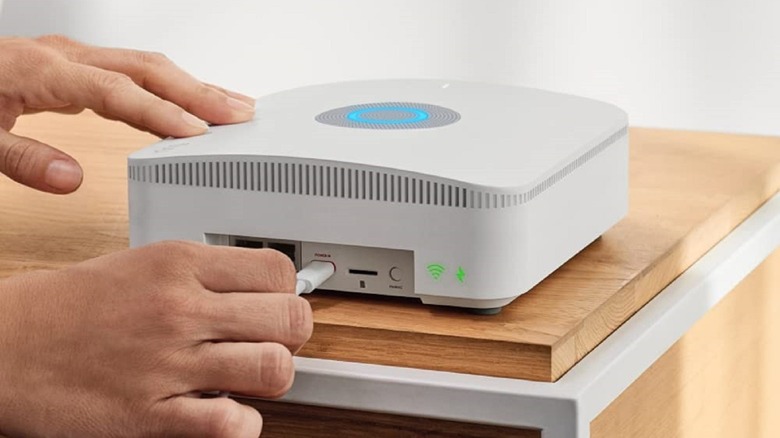
- #RING ALARM PRO BASE STATION REVIEW FULL#
- #RING ALARM PRO BASE STATION REVIEW PLUS#
- #RING ALARM PRO BASE STATION REVIEW PROFESSIONAL#
Nest, for example, contracts with MONI Smart Security (which is now doing business as Brinks Home Security). This is a common arrangement for home security systems. The caller from the monitoring service will identify themselves as being from Ring, since that’s who your business relationship is with, but they actually work for a third-party company that Ring contracts with: Rapid Response Monitoring Services. They’ll dispatch first responders at your request or if they can’t reach you. With a professional-monitoring subscription ( Ring Protect Plus), someone will call you (or your designated secondary contact if they can’t reach you directly) to make sure everything is okay. If you have Ring cameras, you can navigate to that part of the app to see what you can see-it’s worth noting that Ring doesn’t have any in-home cameras-you can call the police, or you can disarm the system if it turns out to be a false alarm (you can also disarm at the keypad if you’re inside the home). Ring Alarm will send a notification to your smartphone, informing you of the system’s status and which sensor triggered the alarm. The app will tell you which sensor triggered the alarm, but you’re on your own from there. If an alarm is tripped, a not-terribly-loud (105dB) siren in the base station sounds off, and an alert is sent to your smartphone that launches the Ring app (a more powerful siren from Dome is on the short list of supported third-party devices).

That goes double for people who already have other Ring devices, because it includes video storage in the cloud for an unlimited number of Ring cameras.


#RING ALARM PRO BASE STATION REVIEW PROFESSIONAL#
You can monitor the system yourself, but at the price Ring is charging for professional monitoring-just $10 per month ($100 per year if paid annually) with no long-term contract-it would be foolish not to sign up for it. The very affordable ($199) starter kit includes a wireless base station, a keypad for arming and disarming the system, one door/window sensor, one passive infrared motion sensor, and a Z-Wave range extender.
#RING ALARM PRO BASE STATION REVIEW PLUS#
And in an interview with Ring Solutions president Mike Harris earlier this week, I learned that’s exactly what Ring intends to do.Įach of the key components in the Ring Alarm home-security system is powered by a Z-Wave Plus chip (but the base station also has a ZigBee radio).īut let’s go over what it can do today, first. But it lacks nothing needed to support those and similar devices down the road. So if those features aren’t dependent on the Alarm Pro being the main Gateway, then an upgrades seems to be in my near future.Ring Alarm doesn’t support smart lighting controls, door locks, thermostats, garage-door openers, or other common smart home products today, and there’s a very short list of supported third-party products. All I’m really seeking is the Ring Edge with Local Video Storage and eero Secure. Knowing tbag I can better make and educated decision as to what path makes most sense for me. So, minus the 24/7 backup Internet (that I can do without to maintain my Eero Pro 6 as a Gateway), exactly what other “Protect Pro subscription features” will I have to forgo? Using your Alarm Pro as an extender will prevent you from accessing many of the Protect Pro subscription features, including 24/7 Backup Internet. Note: We do not recommend using Ring Alarm Pro as a wifi extender for your existing router. Guess the last thing that I am still not seeing or sure about is based upon what features would not be available if I have a Eero Pro 6 as my Gateway router, and a Ring Alarm Pro with Eero 6 as a the WiFi extender. That is all very good information… Much appreciated. Don’t want to need to start running wires throughout the house which I why I went with the Eero meshed network to begin with.
#RING ALARM PRO BASE STATION REVIEW FULL#
Or at least can’t appropriately interact with another Eero Gateway to still offer full functionality. Don’t really see or understand why it needs to be the main router. So exactly what features would be missing? Least I can then determine exactly how important those features are. Hence another reason why I would prefer avoiding having to define the Alarm Pro as also the main gateway. I have been reading a feature online product reviews and community posts/responses but can’t seem to get a definite answer to a few questions.įirst, is the built in Eero router a Eero Pro 6 or just a Eero 6? I wouldn’t want to downgrade my Gateway from a Pro 6 to just a 6.Īlso, the location of my ISP ONT isn’t suitable as a location for my Alarm Base Station.

I currently have a well defined Eero meshed network based upon Eero Pro 6 units, and curious about upgrading my current Ring Alarm system to a Ring Alarm Pro.


 0 kommentar(er)
0 kommentar(er)
